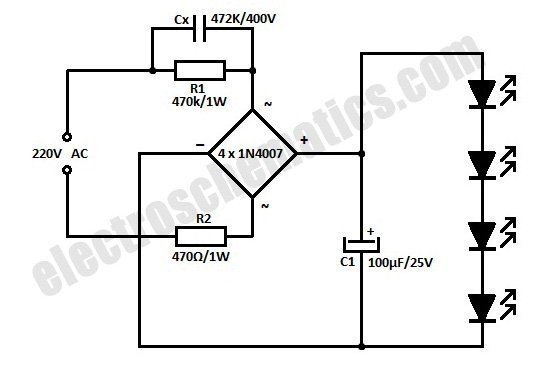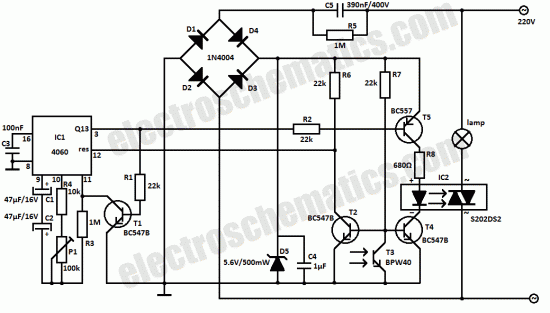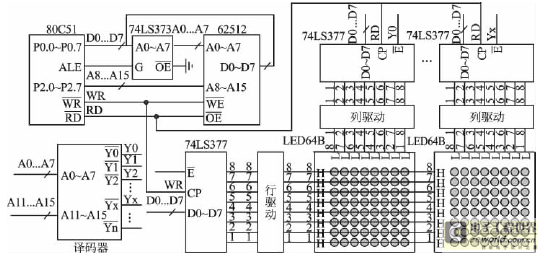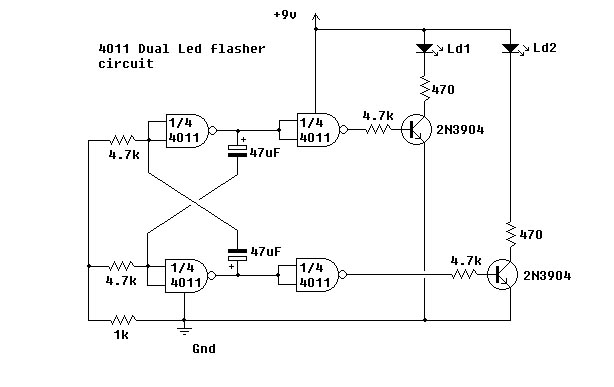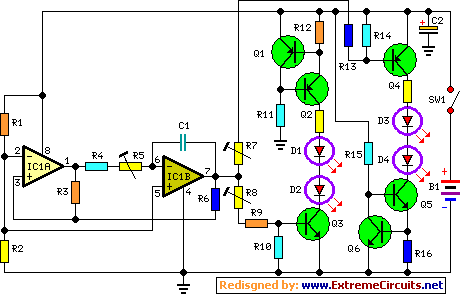
LED light
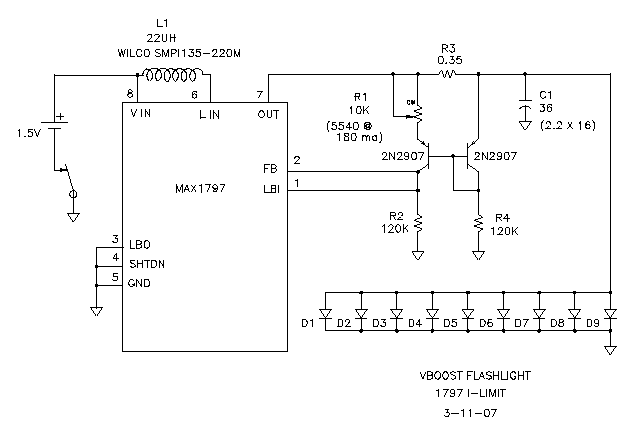
The goal was to create a compact flashlight that could be held in the mouth, easily stored in a pocket, and positioned on a surface to project light upwards. The budget was set at approximately $15, which was significantly lower than the market prices at the time. However, as prices for commercially available models like the Dorcy 41-4262 dropped to $20 and lithium batteries became available for around $1.50, the decision was made to purchase rather than build. A review of the Dorcy flashlight was published, detailing its performance and a collection of LED circuit references gathered before the decision to buy. Subsequently, more affordable multiple-LED flashlights appeared on the market. One was purchased, which performed well but had issues with consistent light output. Time constraints prevented circuit design experimentation, leading to reliance on this flashlight. When the price of a 9-LED flashlight fell to $4.50, it became an attractive option for experimentation. This model met the design criterion of portability, although it was too heavy for mouth-holding. It produced a nice spot beam suitable for searching in tight spaces. However, the rubber switch cover did not sit flush with the metal surface, causing instability when aimed upward. The flashlight was still on its first battery, so long-term light output could not be assessed. A second review provided numeric details and affirmed its good performance. It was noted that the flashlight was unregulated; while the DC-to-DC inverter was not a true regulator, it maintained light output above 50% until the battery voltage fell to 2.5 volts, at which point the lithium battery's voltage would drop rapidly. The flashlight was available at flea markets and eBay, priced at $1.30 in bulk from wholesalers. Similar models were reviewed, confirming they were the same flashlight. The reviewed model was purchased at a Hamfest for $6.99, with prices ranging from $5.99 to $21.99. Comparatively, the flashlight was well-assembled but lacked features such as case serrations for stability and relied on three AAA cells instead of a CR123 lithium battery. It was slightly larger than the Dorcy model and could not be positioned to aim upward. The absence of an electronic DC-to-DC converter or regulator meant it depended on the internal resistance of the batteries for current limiting, likely affecting its lifespan. The light emitted was slightly bluer and had a floodlight pattern rather than a focused beam. Both flashlights were used depending on the lighting needs, and at $6.99, the model was considered a viable case for a Luxeon LED flashlight design. Future plans included possibly adding a DC-to-DC inverter for consistent light output and extended LED life, but for now, the flashlight would be used as-is. Prices continued to decline, with offers of $8.99 for two units, including shipping, from SurplusComputers. The case quality was satisfactory, although the front LED assembly was pressed in rather than securely attached.
The compact flashlight design aims to provide versatility and ease of use in various scenarios. The choice of using multiple LEDs enhances the brightness and efficiency of the flashlight, making it suitable for both focused and floodlight applications. The decision to utilize lithium batteries allows for a lightweight and powerful energy source, although the reliance on unregulated output may affect performance over time.
In terms of construction, the flashlight's housing must be durable enough to withstand regular handling, particularly since it is designed for portability. The absence of serrations in the casing may lead to rolling when placed on uneven surfaces, which could be addressed in future iterations of the design. The choice of battery type is critical; while AAA batteries provide ease of replacement, a design utilizing lithium batteries could enhance performance and reduce weight.
The light output characteristics are also noteworthy. While the floodlight pattern is advantageous for illuminating larger areas, a more focused beam might be preferred for specific tasks. Incorporating a DC-to-DC converter could stabilize the light output and prolong the lifespan of the LEDs by managing the power supplied to them more effectively.
Overall, the flashlight serves as a practical solution for various lighting needs, and the exploration of potential modifications could yield improvements in functionality and user experience. The continued reduction in prices for components and complete units suggests a growing market for such devices, presenting opportunities for innovation and customization in future designs.Wanted the flashlight to be squat so I could hold it in my mouth, throw it in mypocket, and lay it on a surface with the beam shootingup. I wanted to build it for about $15, which was around 1/4 what they were selling for when I started the project.
Prices dropped. When the Dorcy 41-4262 got down to $20 and lithium batteries got down to $1. 50, it didn`t make sense to build my own flashlight. So I bought the Dorcy and published a link page: what I bought, how it performs, a collection of the led circuit references that I collected before I decided to buy. Then pretty decent looking multiple-led flashlights started appearing. I bought one and found it looked good and worked good, but had some problems with consistant light output.
I had no time to play with a circuit design, so I just used it. When the price of a 9-LED flashlight got down to $4. 50 including shipping, It was time to play. At that price, about the price of a magazine at the news stand, a failed project is disposable. This flashlight met one of my design criteria; I can throw it in my pocket. It is too heavy to hold in my mouth, but I can do it better than with a Maglite. It puts out a nice spot beam and is good for searching out things in tight places. You can balance it so it shoots the light upward, But, the little rubber switch cover on the end doesn`t quite get below the metal surface and the flashlight is not stable aimed upward. I am still on my first battery so I can`t comment about light output as the battery discharges. So why am I overall satisfied with it A second review gives the numeric details and also concludes that it is a good performer.
The second review states that the flashlight is unregulated, which I think is a little mis-leading. True, the dc-to-dc inverter is not a true regulator, but it does keep the light output above 50% of maximum until the battery voltage drops to 2. 5 volts. At 2. 5 volts the lithium battery has reached its voltage dropoff curve and VERY quickly drops its voltage toward zero.
This flashlight was showing up at flea markets and ebay outlets. It cost $1. 30 in lots of 200 from wholesalers. One sold under a Muyan brand was reviewed and the review is pretty accurate. A Wolf brand sold by Advancedmart (no longer available there)was also reviewed, and if you look at the reviews, you can see they are the same flashlight. The one I bought was from a vendor at a Hamfest. I paid $6. 99. I saw them from $5. 99 (plus shipping) to $21. 99, same flashlight. So, how does it compare It is put together well. It doesn`t have the serrations in the case that the Dorcy has that keep it from rolling. It uses three AAA cells instead of a CR123 lithium battery. It is a little bigger than the Dorcy. It can`t be placed on a table and aimed upward. It doesn`t have any electronic dc-to-dc converter or regulator. In fact, it relies on the internal resistance of the batteries for current limiting and doesn`t even have a resistor.
Probably won`t have a long life with that arrangement. The light color is a little bluer. It has a nice floodlight pattern instead of the more focused beam from the Dorcy. I use both flashlights depending on whether I want to light a large area or a small area. At $6. 99 I would buy it as a case for a Luxeon LED flashlight if I still wanted to build one. I might add a dc-to-dc inverter to keep light output more constant, and to extend the life of the LEDs. Right now I am just going to use it, as is. Prices keep dropping: $8. 99 for two, including shipping, from SurplusComputers. Case quality was good. but the front LED assembly was pressed in, instead of a 🔗 External reference
The compact flashlight design aims to provide versatility and ease of use in various scenarios. The choice of using multiple LEDs enhances the brightness and efficiency of the flashlight, making it suitable for both focused and floodlight applications. The decision to utilize lithium batteries allows for a lightweight and powerful energy source, although the reliance on unregulated output may affect performance over time.
In terms of construction, the flashlight's housing must be durable enough to withstand regular handling, particularly since it is designed for portability. The absence of serrations in the casing may lead to rolling when placed on uneven surfaces, which could be addressed in future iterations of the design. The choice of battery type is critical; while AAA batteries provide ease of replacement, a design utilizing lithium batteries could enhance performance and reduce weight.
The light output characteristics are also noteworthy. While the floodlight pattern is advantageous for illuminating larger areas, a more focused beam might be preferred for specific tasks. Incorporating a DC-to-DC converter could stabilize the light output and prolong the lifespan of the LEDs by managing the power supplied to them more effectively.
Overall, the flashlight serves as a practical solution for various lighting needs, and the exploration of potential modifications could yield improvements in functionality and user experience. The continued reduction in prices for components and complete units suggests a growing market for such devices, presenting opportunities for innovation and customization in future designs.Wanted the flashlight to be squat so I could hold it in my mouth, throw it in mypocket, and lay it on a surface with the beam shootingup. I wanted to build it for about $15, which was around 1/4 what they were selling for when I started the project.
Prices dropped. When the Dorcy 41-4262 got down to $20 and lithium batteries got down to $1. 50, it didn`t make sense to build my own flashlight. So I bought the Dorcy and published a link page: what I bought, how it performs, a collection of the led circuit references that I collected before I decided to buy. Then pretty decent looking multiple-led flashlights started appearing. I bought one and found it looked good and worked good, but had some problems with consistant light output.
I had no time to play with a circuit design, so I just used it. When the price of a 9-LED flashlight got down to $4. 50 including shipping, It was time to play. At that price, about the price of a magazine at the news stand, a failed project is disposable. This flashlight met one of my design criteria; I can throw it in my pocket. It is too heavy to hold in my mouth, but I can do it better than with a Maglite. It puts out a nice spot beam and is good for searching out things in tight places. You can balance it so it shoots the light upward, But, the little rubber switch cover on the end doesn`t quite get below the metal surface and the flashlight is not stable aimed upward. I am still on my first battery so I can`t comment about light output as the battery discharges. So why am I overall satisfied with it A second review gives the numeric details and also concludes that it is a good performer.
The second review states that the flashlight is unregulated, which I think is a little mis-leading. True, the dc-to-dc inverter is not a true regulator, but it does keep the light output above 50% of maximum until the battery voltage drops to 2. 5 volts. At 2. 5 volts the lithium battery has reached its voltage dropoff curve and VERY quickly drops its voltage toward zero.
This flashlight was showing up at flea markets and ebay outlets. It cost $1. 30 in lots of 200 from wholesalers. One sold under a Muyan brand was reviewed and the review is pretty accurate. A Wolf brand sold by Advancedmart (no longer available there)was also reviewed, and if you look at the reviews, you can see they are the same flashlight. The one I bought was from a vendor at a Hamfest. I paid $6. 99. I saw them from $5. 99 (plus shipping) to $21. 99, same flashlight. So, how does it compare It is put together well. It doesn`t have the serrations in the case that the Dorcy has that keep it from rolling. It uses three AAA cells instead of a CR123 lithium battery. It is a little bigger than the Dorcy. It can`t be placed on a table and aimed upward. It doesn`t have any electronic dc-to-dc converter or regulator. In fact, it relies on the internal resistance of the batteries for current limiting and doesn`t even have a resistor.
Probably won`t have a long life with that arrangement. The light color is a little bluer. It has a nice floodlight pattern instead of the more focused beam from the Dorcy. I use both flashlights depending on whether I want to light a large area or a small area. At $6. 99 I would buy it as a case for a Luxeon LED flashlight if I still wanted to build one. I might add a dc-to-dc inverter to keep light output more constant, and to extend the life of the LEDs. Right now I am just going to use it, as is. Prices keep dropping: $8. 99 for two, including shipping, from SurplusComputers. Case quality was good. but the front LED assembly was pressed in, instead of a 🔗 External reference
